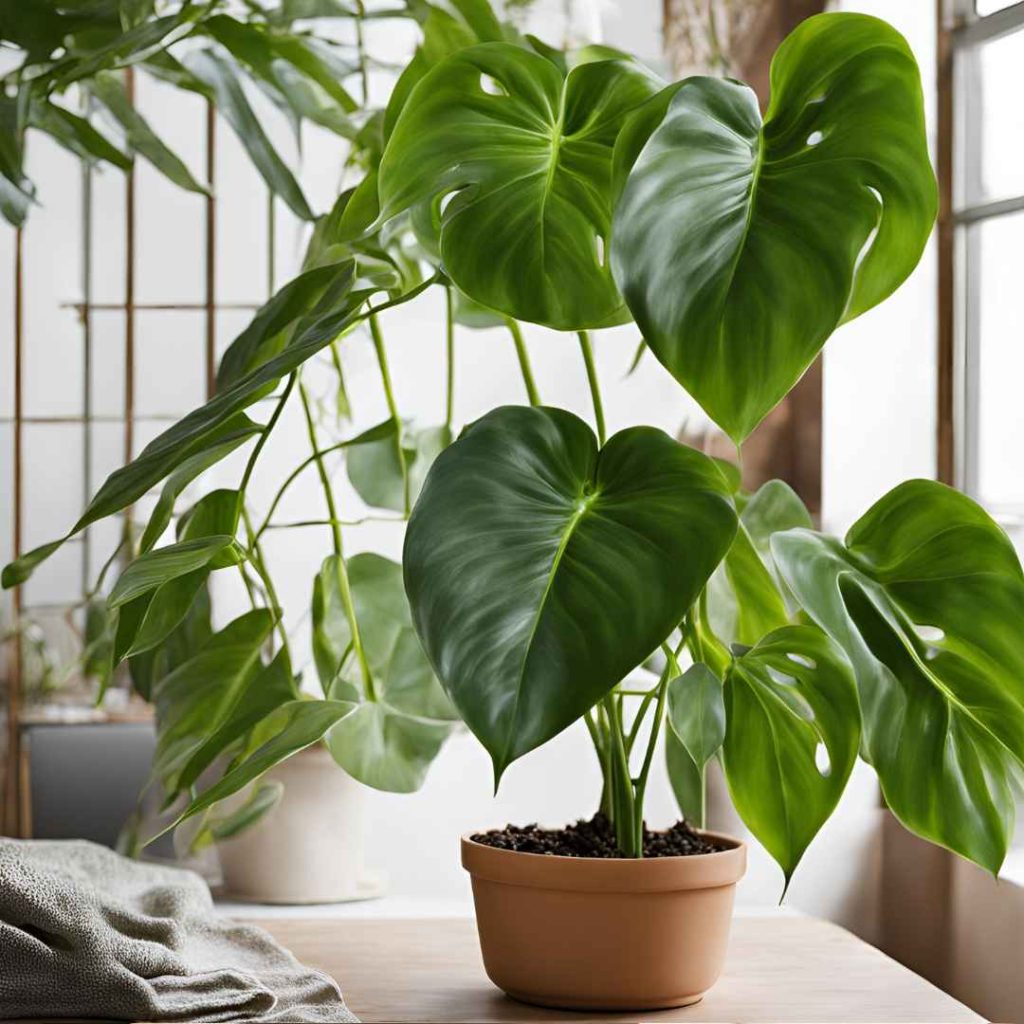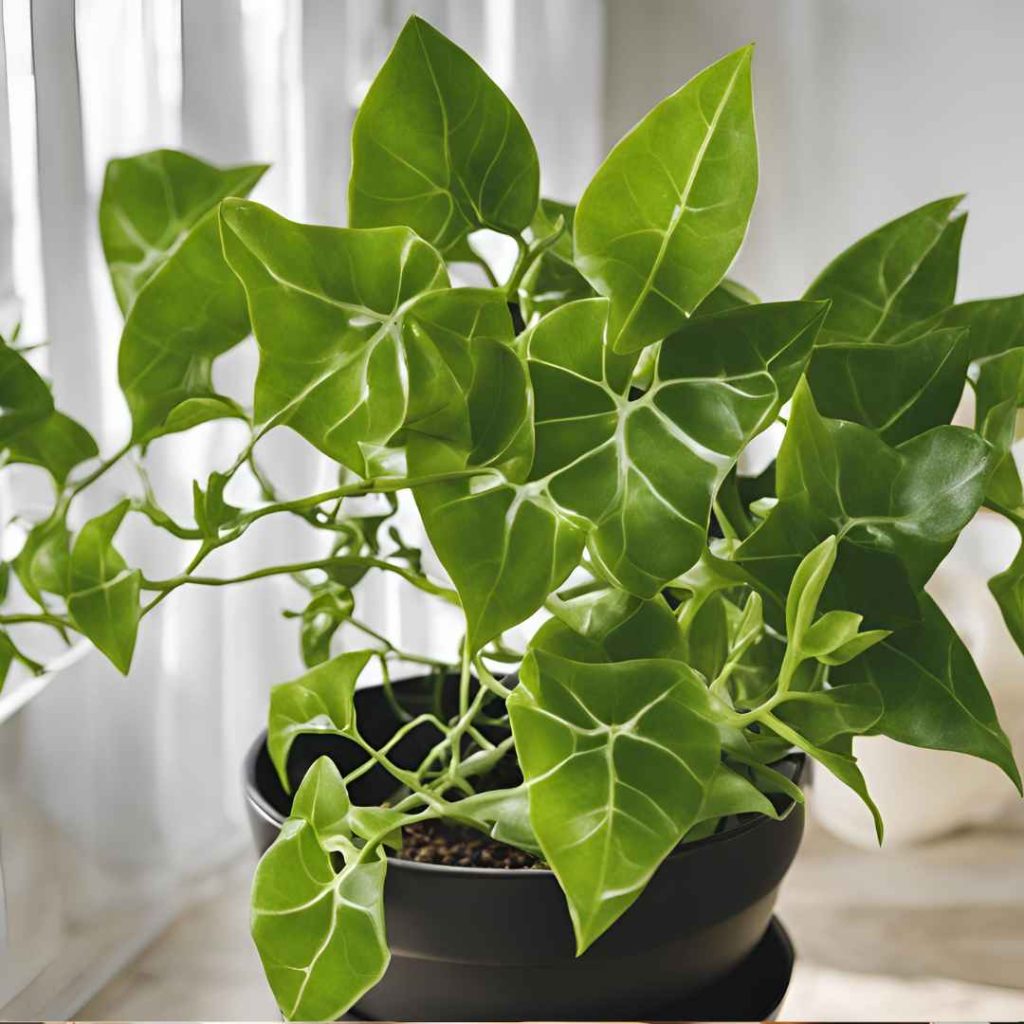In addition to adding life to interior design, indoor plants can improve mood and purify the environment as well. By selecting simple houseplant species, you might become an exceptional plant caregiver even if you’re unlikely to have a glowing common sense.
For survival, every crop requires nourishment, sunlight, and vitamins. Those requirements can differ significantly based on the kind of crop. The greatest results are obtained from indoor plants cultivated in environments that substantially resemble their natural environment. Certain types are better suited for novices since they are more accommodating compared to alternatives.
Easy-to-maintain houseplants will get you started on the path to assembling a wonderful assortment of luxuriant indoor vegetation. The top indoor plants for novices are listed below.
Monstera:

These well-liked indoor vegetation, sometimes referred to as cleft-leaf philodendrons or Swiss cheese vegetation, are prized for their striking heart-formed greenery that, as they age, get vertical cutouts and apertures.
When given frequent watering and a moist atmosphere, these ascending tropical greenery—which can be developed on an algae-covered pillar or any other shaft—are effortless ornamental plants to nurture.
Spider Plant:

The characteristic of a spider plant is its grass-like, multicolored or streaming greenery. Fully grown plants generate white spherical blossoms on prolonged, overhanging stalks, and they also generate baby spider-like vegetation that are capable of being clipped off to form fresh specimens.
A greater moisture content and intense lighting are ideal growing conditions for spider plant varieties, which are also extremely straightforward to develop and ideal for novices.
Pothos:

The heart-formed leaflets of this philodendron impostor are greenish, yellowish, or multicolored. These hanging vegetation develop quickly, and clippings of their stems can be readily transplanted to form fresh vegetation.
Pothos are easy-to-grow indoor vegetation that can withstand a range of lighting and moisture levels. Keep out of bright Lighting as it can scorch the greenery.
Philodendron:

Native to tropical woodlands, philodendrons are a stunning display of hue, structure, and arrangement of leaves that go well with any type of interior design. These tightly packed or vining houseplants are very little maintenance.
Permit houseplants to establish themselves along openings, climb a climbing structure, or cascade down the outer edges of receptacles. Give the substrate good drainage, intermittent watering, and a significant relative moisture.
Rubber Plant:

The rubber plant, so-called because of the syrupy liquid that is utilized to produce rubber-based products, grows erect and has huge, dense elliptical foliage with multicolored or variations of bright greenish, a deep red, or other colors.
Occasionally, the foliage also has vivid shafts and sprouting buds. This tropical variety, which is habitant to the regions of Southeast Asia, needs frequent fertilization, somewhat damp substrate, and occasionally moisture. Vegetation is susceptible to atmospheric fluctuations and breezes.
Chinese Evergreen:

This tropical houseplant, often called Chinese evergreen, adds vivid splatters of brightness to interior environments with its assortment of vivid leafy colors and geometric shapes. Because they expand slowly and remain organized, flowers can be displayed on end spreadsheets, bookcases, and other modest locations.
These low-maintenance indoor vegetation require only periodic watering and well-drained substrate, so position them in a hot, wet area like your cooking area or restroom.
Prayer Plant:

This colorful tropical species gets its name from its foliage, which wrap up at evening to resemble clasped hands involuntarily. The foliage can vary in a variety of forms, colors, and textures.
If you provide the proper circumstances for cultivation, prayer houseplants are very simple indoor vegetation to cultivate. Position in a draft-free area, such as the cooking area or restrooms, with lots of natural illumination and significant dampness. Apply liquid and amendments on an ongoing basis.
Crassula:

Succulent vegetation in the huge taxonomy Cassola come in a variety of dimensions, forms, and patterns. The jade species is among among the least appealing Crassula for indoor cultivation.
Almost autonomous when planted towards a southwest or west-facing opening, this fluffy-leaved indoor plant (which can be transplanted exterior throughout hot seasons) enjoys strong sunlight, very low moisture, and minimal soil amendment or fluid.
Begonia:

For lovers of easy care and elegance in houseplants, begonia plants are the ideal choice. If you provide them with constant illumination, climate, and irrigating, you’ll get compensated with gorgeous, luscious leaves.
Begonias are an attractive option for both experienced and inexperienced cultivated caregivers because of their charming enhancement of any interior setting.
Nerve Plant:

The nerve foliage is distinguishable from plants with polka- dot patterns by its unique patterning of white, pinkish, or reddish on its leaves and its crawling behavior.
This tropical foliage requires an intense dampness setting, like a miniature aquarium, and thrives excellent in damp, drainage-resistant soil. Steer clear of ultraviolet rays as it may scorch the foliage.
Peperomia:

A vast category of tropical plants known as Peperomia has vibrant foliage and an erect, arranging, or spreading routine. This low-maintenance, starter species does admirably in pleasant, drainage-efficient soil with intermediate to substantial dampness levels.
Aerate the substrate by letting it ventilate between successive irrigation; excessive irrigation can cause root decay. Position in an area with intermediate to strong indirect illumination to preserve the vivid hue of the greenery.
Drop Tongue Plant:

Recognized by another name, “green shield,” this unique aroid is adored by lovers of house plants for its eye-catching multicolored foliage, which may grow as much as eighteen inches in length.
This slow-growing plant, which is native to Asia’s southeast, likes frequent irrigation and elevated moisture. For novices, the propensity of greenery to turn yellow as they start drying off may prove instructional as it acts as an indication of keeping tabs on other specimens. Stay out of ultraviolet rays and chilly breezes.
Arrowhead Vine:

The foliage of the arrowhead vineyards have an arrow-like morphology and come in a variety of hues, such as greenish, purple, pinkish, white, and multicolored stripes. Vegetation’s are dense and standing up, and as they get older, they start to wander.
This minimally maintained houseplant likes its planting medium to be uniformly damp as well as elevated in wetness. To safeguard against root decay, let the substrate become dehydrated during irrigation and don’t underwater.
Purple Tradescantia:

Throughout the summertime, purple spiderwort will thrive planted outside or inside as an indoor plant. The pike-formed leaf of this sprawling tropical vegetation, which is multicolored or blooms in a range of hues, is the reason it is propagated.
Purple spiderwort is vegetation that can withstand varying degrees of lighting, moisture, and fluid content, rendering it an excellent choice for novices.
Dracaena:

This lovely, prickly foliage grows erect and produces flexible leaves that might be greenish, reddish crimson or multicolored. Dracaena can be planted outdoors in the summertime or inside as an indoor plant. Newcomers might choose houseplants since they are tolerant of a variety of lighting and irrigating circumstances and demand minimal to no fertilization.
